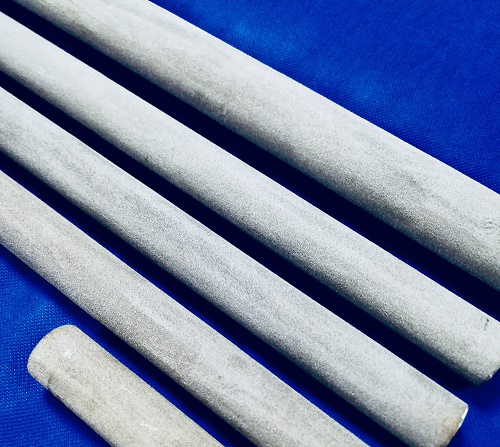Lord Fin Tube--High flux tube for heat exchanger
How to manufacturing High Flux Tubes?
The manufacturing process of high flux tubes involves several critical steps to ensure quality and performance:
1. Procurement and Testing of Test Tubes:
- Acquire necessary test tubes and conduct comprehensive tests including:
- Review of material quality certificates to ensure compliance with manufacturing standards and technical specifications.
- Validation checks of tube dimensions, internal and external surfaces, diameter, wall thickness, and straightness.
- Special reinspection as per technical agreements and specific requirements.
2. Quality Confirmation and Surface Treatment:
- Confirm the quality of tubes and process them to remove oil, surface corrosion, and attachments.
- Enhance inner surface adhesion by processing inside and outside surfaces.
3. Application of Adhesive:
- Spray iron powder (or copper) evenly onto the inner wall surface to create a uniform coating film.
4. High Flux Tubes Heating Treatment (Firing):
- Utilize a dedicated electrical heating device to heat transfer tubes coated with iron (or copper).
- Conduct heating treatment at around 800°C for approximately half an hour, allowing the sprayed iron powder to adhere firmly to the inner wall.
5. High Flux Tubes Sintering and Cooling:
- Sinter the tubes to ensure firm adhesion of iron (or copper) to the wall.
- Allow tubes to cool with air circulation.
The sintering process is crucial, ensuring the firm attachment of iron (or copper) to the tube wall, and represents the core technology with high technical content and commercial value.
Advantages of High Flux Tubes:
1. Enhanced Heat Transfer Efficiency: High flux tubes offer 2-3 times greater heat transfer efficiency compared to normal tubes.
2. Lower Energy Consumption: They consume at least 25% less energy than average heat transfer tubes.
3. Reduced Fouling Effect: High flux tubes exhibit significantly higher resistance to fouling than ordinary tubes due to their unique structure.
The superior performance of high flux tubes is attributed to their structure, which features a sintered inner wall surface with numerous fine projections and depressions. These increase the heat transfer area and promote uneven flow within the tube, enhancing heat transfer efficiency and reducing fouling.
The high flux tubes represent a significant advancement in heat transfer technology, offering superior performance and longevity compared to conventional tubes.


